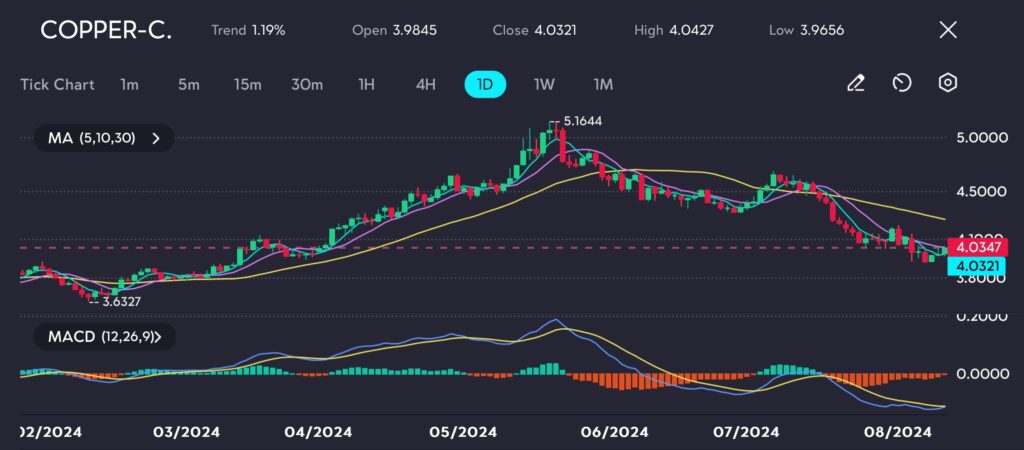Key Points:
- Copper prices fell to $4.00 per pound last week due to fears of a US recession
- However, copper prices slightly improved after the announcement of positive US unemployment data.
- Markets are awaiting US consumer price data and China’s retail sales and industrial production figures, which could influence demand expectations for copper.
This is a follow up article to: Copper prices slide on China demand concerns
Copper (Symbol: Copper-C) prices began the week with a softer tone, reflecting ongoing global economic uncertainties. Early trading saw three-month copper prices drop to $4.00 per pound.

Picture: Copper prices dip during global economic uncertainty, as observed on the VT Markets app.
Copper, often seen as a bellwether for the global economy, has been under pressure recently due to fears of a US recession. These concerns triggered a sharp sell-off in financial markets last week, leading to a dip in copper prices.
However, sentiment improved slightly after US data showed a larger-than-expected drop in new unemployment benefit applications, suggesting some resilience in the US labour market.
The markets continue to observe
Markets are now closely watching the upcoming US consumer price index (CPI) report, set to be released on Wednesday. Economists expect a 0.2% increase in both the headline and core CPI, with the annual core rate slowing to 3.2%.
This data will be crucial in shaping expectations for the Federal Reserve’s next moves, which in turn could impact demand for industrial metals like copper.
In addition to US data, market participants are also looking forward to China’s retail sales and industrial production figures, due on Thursday. These indicators are expected to show continued underperformance in the Chinese economy, underlining the need for more stimulus.
Given that China is the world’s largest consumer of copper, any signs of economic weakness there could weigh heavily on the metal’s demand outlook.
Risks and opportunities for copper traders
Such mixed economic signals from the US and China suggest that copper prices could experience further volatility in the near term, creating opportunities for scalping.
The recent dip in copper prices could also encourage buying interest, particularly if China’s data shows signs of stabilising demand.









